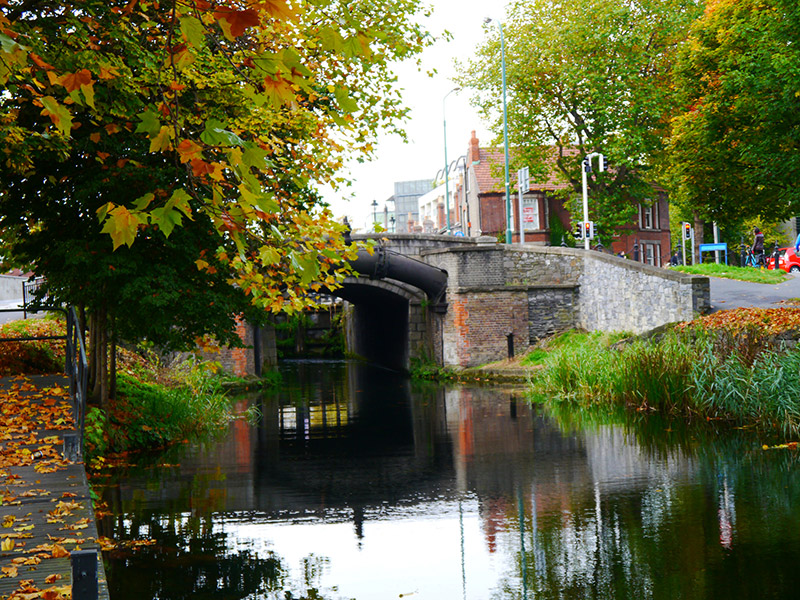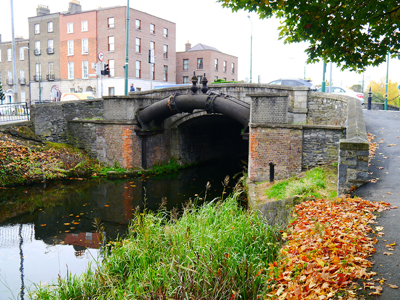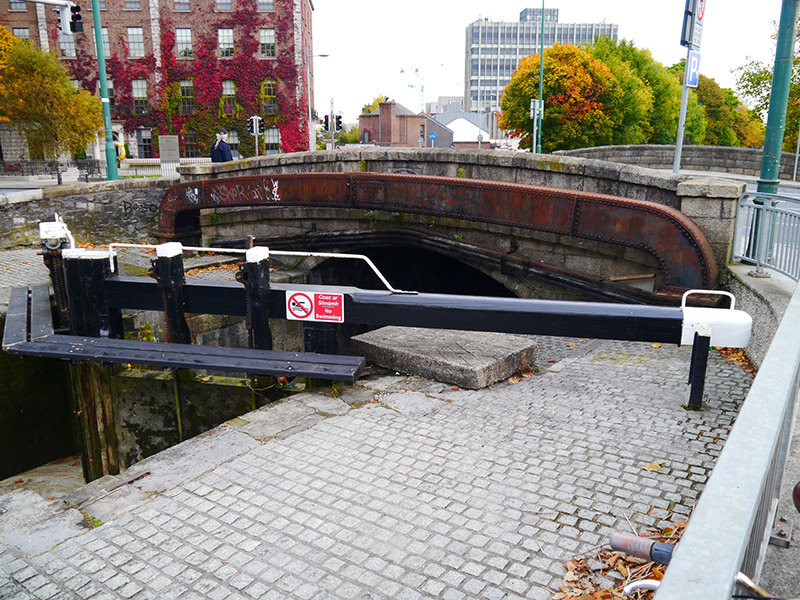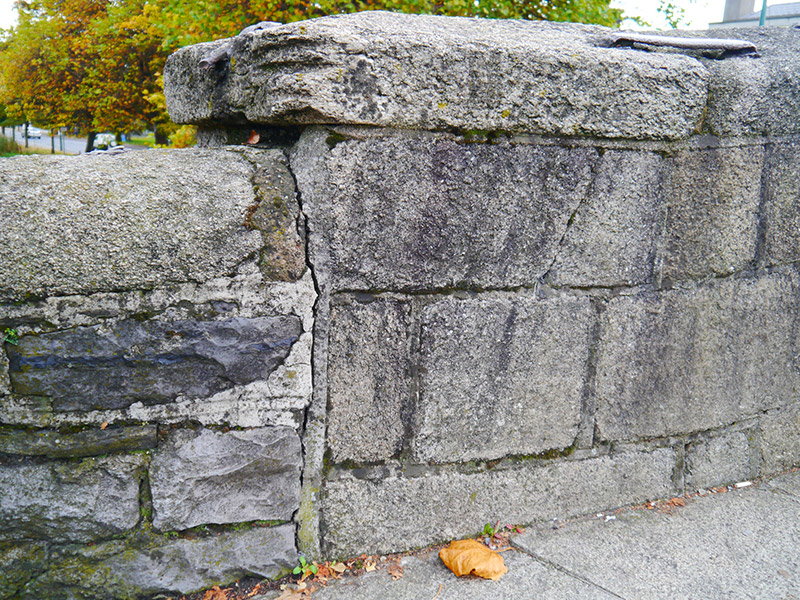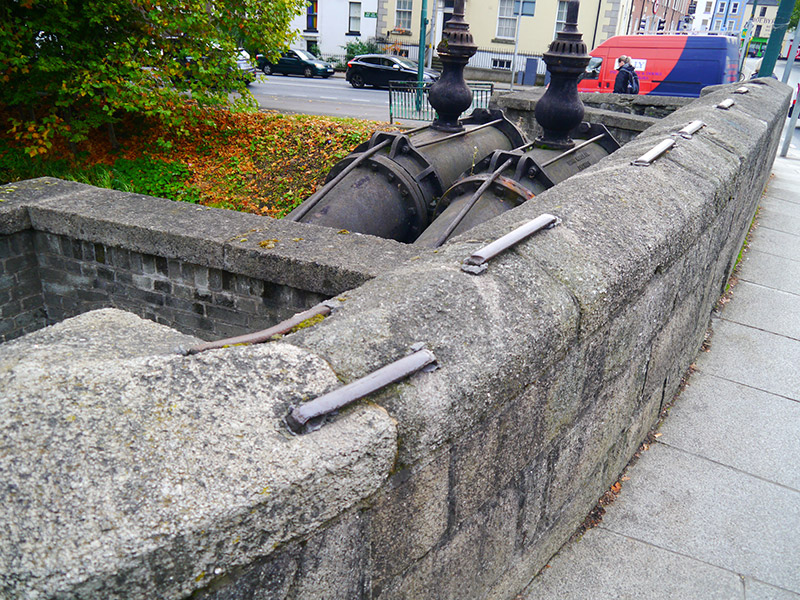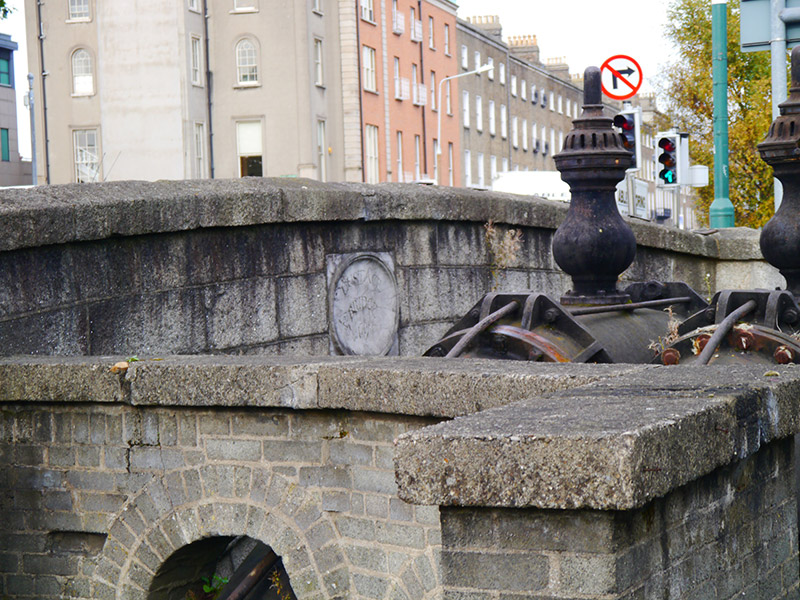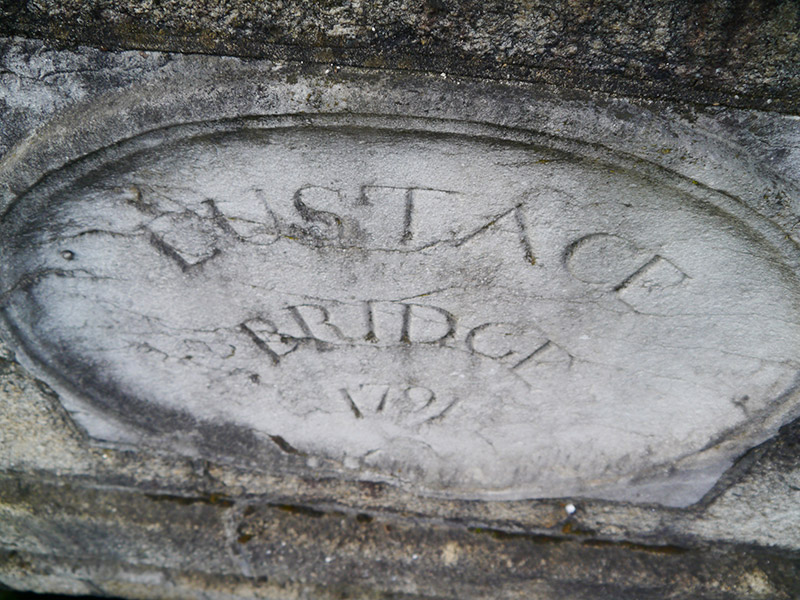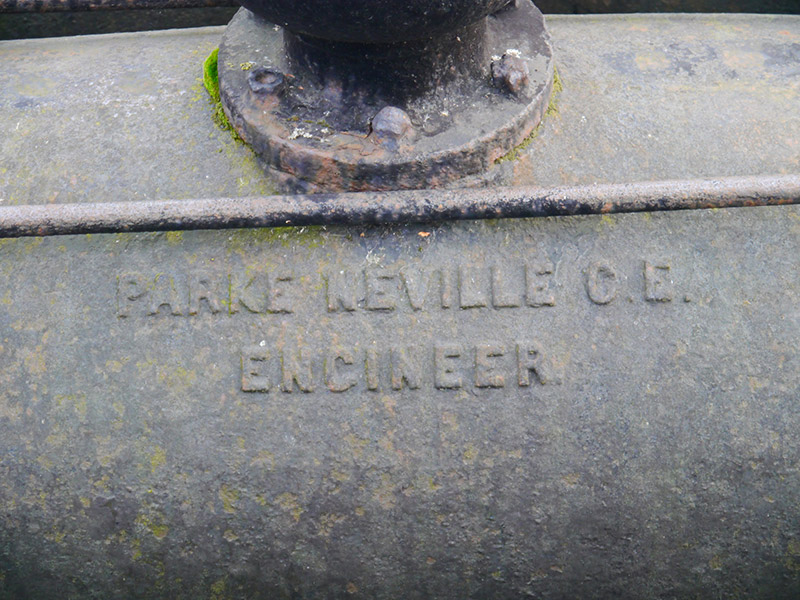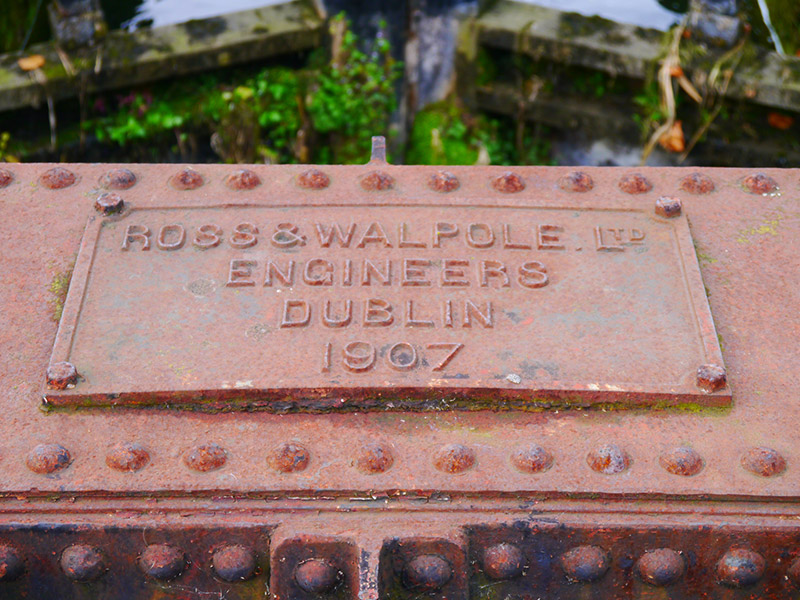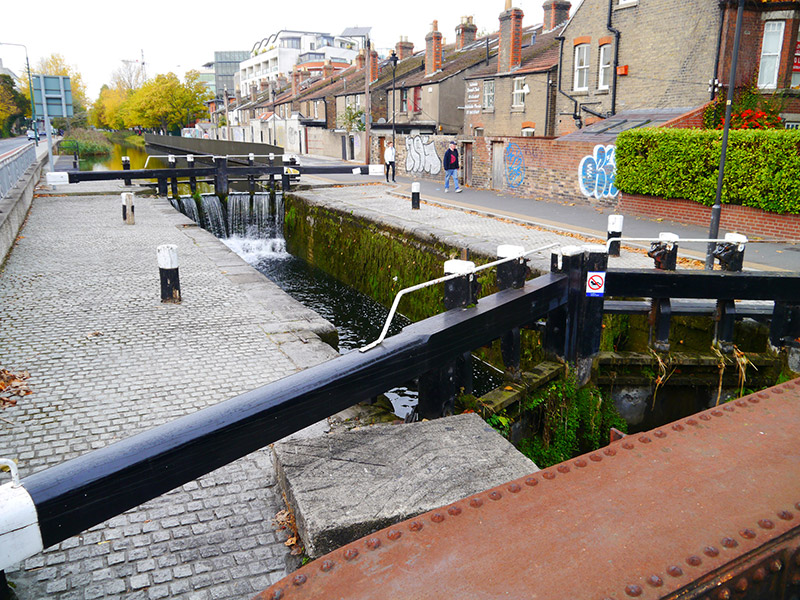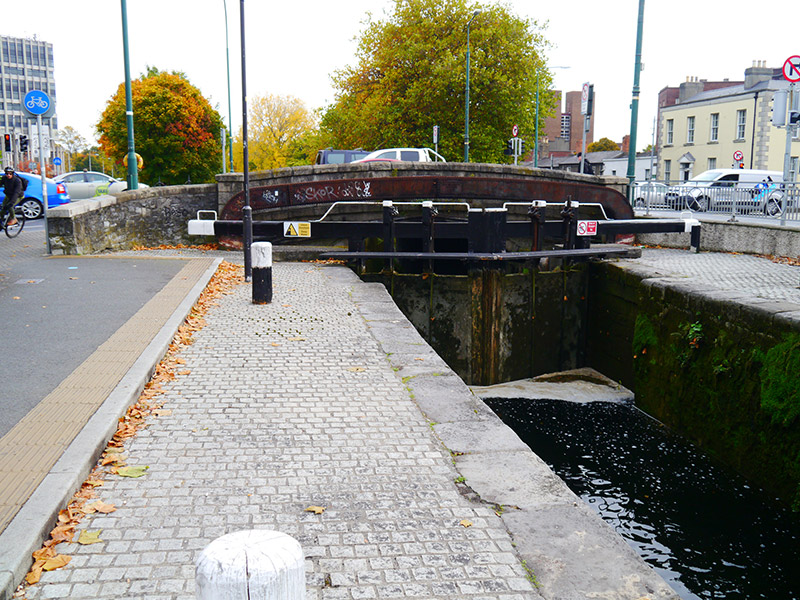Survey Data
Reg No
50930261
Rating
Regional
Categories of Special Interest
Architectural, Social, Technical
Original Use
Bridge
In Use As
Bridge
Date
1790 - 1795
Coordinates
316450, 232709
Date Recorded
20/10/2015
Date Updated
--/--/--
Description
Single-arch humpbacked granite bridge, dated 1791, carrying road over Grand Canal. Segmental-arch with granite voussoirs, projecting impost and paviors. Ashlar granite parapet walls with projecting stringcourse to east and west, surmounted by raked granite coping with iron tie-bars and terminated by curved rubble limestone walls with matching coping, rendered to south-east. Circular carved Portland limestone plaques, centrally set over arches to outer parapets, inscribed 'Eustace Bridge 1791’. Cast-iron pipes flanking east and west of bridge, c. 1870 by Neville Parke, and c. 1907 by Ross & Walpole respectively. That to east sprung from red brick walls laid to English garden wall bond with flush red brick corner quoins and granite coping, flanked by rubble limestone walls and surmounted by grey brick parapet with matching coping. Round-headed pipe openings to parapet with red brick voussoirs supported on cast-iron plinths over engaged cast-iron columns. Mild-steel railings abut to south-west side of bridge.
Appraisal
The Grand Canal, connecting the City of Dublin with the River Shannon, was first proposed c. 1715. Work by the Commissioners for Inland Navigation began in 1757 and was completed in 1804. Eustace Bridge is one of the bridges named after board members of the Grand Canal Company, in this instance Lieutenant Charles Eustace, Deputy Chairman. Despite the original structure being obscured by late-nineteenth and early-twentieth century infrastructure, the bridge is well retained, and these later engineering works are also of some interest. The early stonework quality and masonry skill remain evident, and, in conjunction with the adjacent canal lock, is an appealing historic composition in the cityscape.
